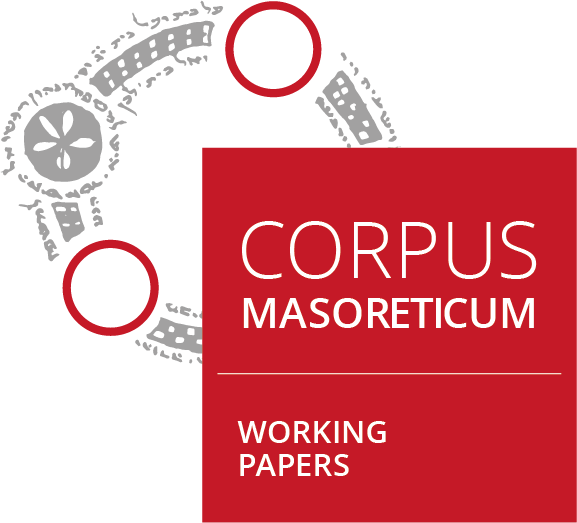Gentile Wisdom Side-by-Side with Rashi:
An Example of a Masora Figurata that Conveys Much More than Masoretic Knowledge
Identifier (Artikel)
Abstract
Corpus Masoreticum Working Papers 7
Moritz Steinschneider said of the 12th-century French-Ashkenazi scholar Berekhyah ben Natronai ha-Naqdan that he “proved the point that political and social exclusion in Christian countries couldn’t prevent the excluded from benefiting from intellectual goods.” Like his father, Berekhyah’s son Eliyya seems to have been interested in the transfer of Gentile knowledge, as one masora figurata (mf) in a bible codex that he copied, punctuated, and equipped with Masorah indicates: On fol. 33r of MS Biblioteca Apostolica Vaticana ebr. 14 (BAV14), Eliyya illustrated the text of Gen 30:14–24 with a depiction of two strange anthropomorphic beings and an animal. We show that this composition represents an ancient myth about mandrakes which purports that the plant emits a deathly cry if its root is pulled out of the ground. Thus, the myth recommends tying a dog to the plant and getting him to uproot it, which leaves the animal dead but the human gatherer alive, and in possession of the precious root.
Eliyya’s depiction in BAV14—a bible codex, of all things—appears to be the first known explicit reference to the mandrake myth in Jewish writings, if we do not count a story related by Flavius Josephus in his Jewish War about a plant called Baaras that displays most of the characteristics just described. Gentile sources from all over the world, on the other hand, refer to the mandrake and its strange properties hundreds of years earlier.
In this paper, we trace literary and pictorial references through time that relate (or might relate) to mandrakes, both in Gentile and Jewish works. We also discuss one ‘specifically Jewish’ explanation for how Reuben, the protagonist that deals with (and in) mandrakes in Gen 30:14–24, could end up with dudaʾim in his possession, an explanation that in all likelihood reflects widespread Jewish awareness of the mandrake myth. Interestingly, Eliyya did not depict this midrashic interpretation, but presented the mainstream culture’s view in his masora figurata.
Statistiken



